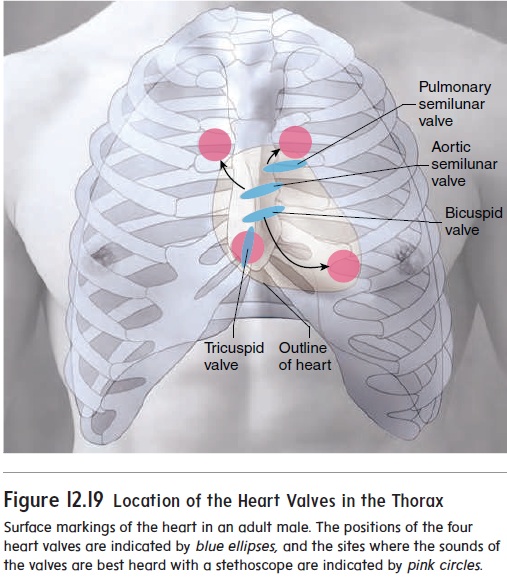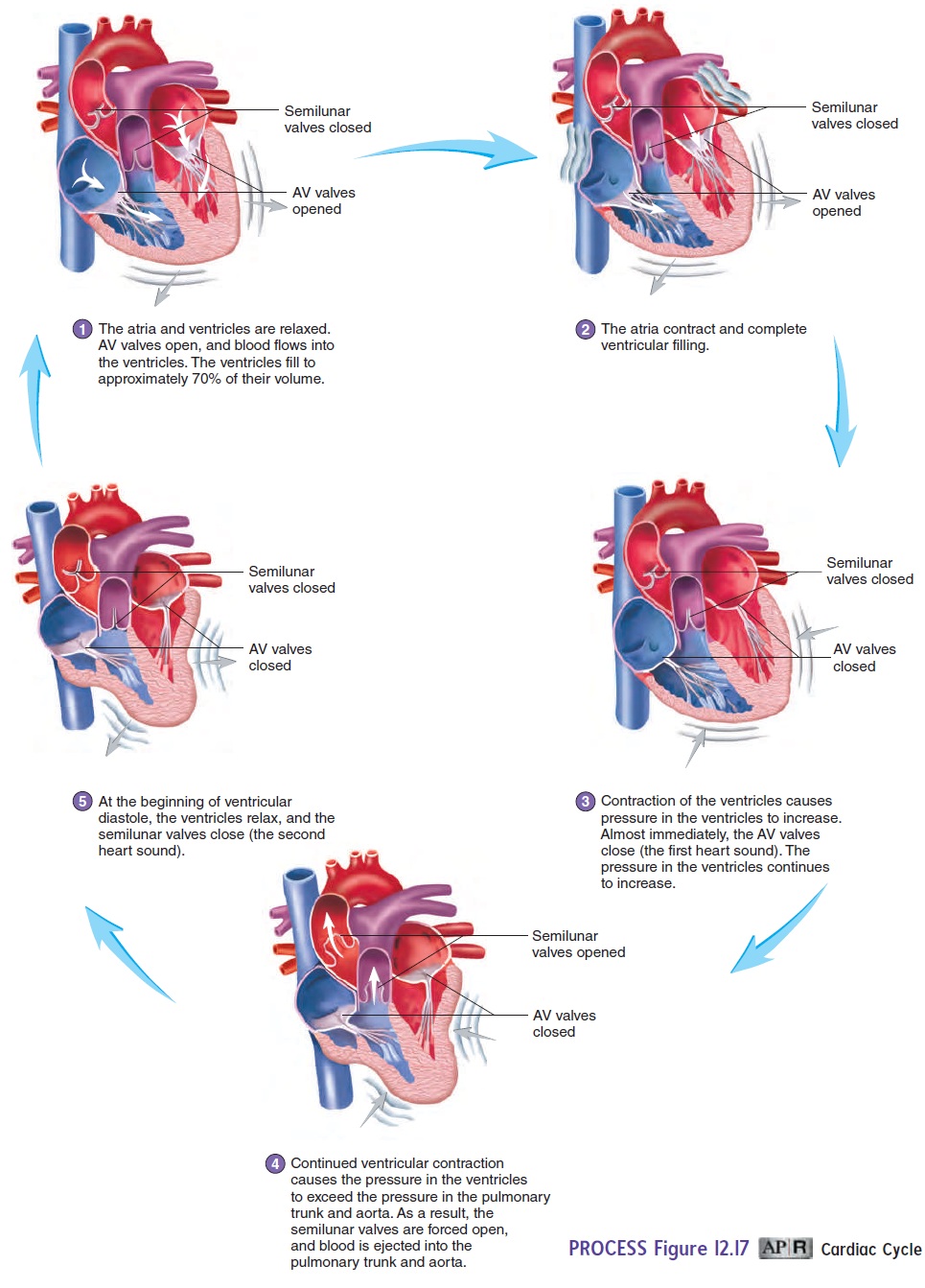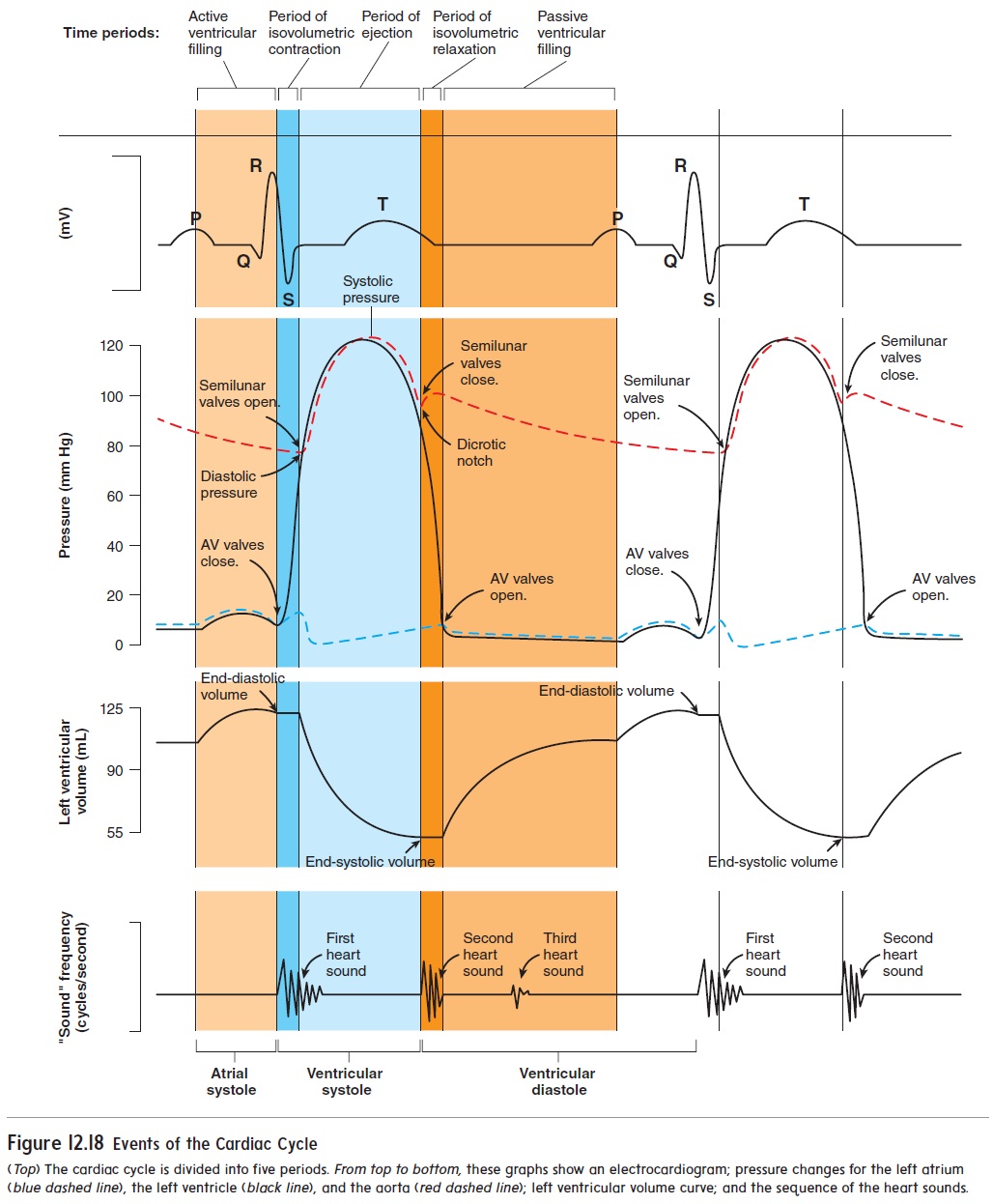Chapter: Essentials of Anatomy and Physiology: Heart
Heart Sounds
HEART SOUNDS
The stethoscope (steth′ ̄o -sk̄o p; stetho, the chest) was originally developed to listen to the sounds of the lungs and heart and is now used to listen to other sounds of the body as well. Figure 12.19 shows the sites in the thorax where the heart sounds can best be heard with a stethoscope. There are two main heart sounds. The first heart sound can be represented by the syllable lubb, and the second heart sound can be represented by dupp. The first heart sound has a lower pitch than the second. The first heart sound occurs at the beginning of ventricular systole and results from clo-sure of the AV valves (see figure 12.17, step 3, and figure 12.18). The second heart sound occurs at the beginning of ventricular diastole and results from closure of the semilunar valves (see figure 12.17, step 5, and figure 12.18). The valves usually do not make sounds when they open.
Clinically, ventricular systole occurs between the first and second heart sounds. Ventricular diastole occurs between the sec- ond heart sound and the first heart sound of the next beat. Because ventricular diastole lasts longer than ventricular systole, there is less time between the first and second heart sounds than between the second heart sound and the first heart sound of the next beat.

Figure 12.19 Location of the Heart Valves in the Thorax
Abnormal heart sounds called murmurs are usually a result of faulty valves. For example, an incompetent valve fails to close tightly, so that blood leaks through the valve when it is closed (see Clinical Impact, “Consequences of an Incompetent Bicuspid Valve”). A murmur caused by an incompetent valve makes a swishing sound immediately after the valve closes. For example, an incompetent bicuspid valve produces a swishing sound imme-diately after the first heart sound.
When the opening of a valve is narrowed, or stenosed (sten′ ozd; a narrowing), a swishing sound precedes closure of the stenosed valve. For example, when the bicuspid valve is stenosed, a swishing sound precedes the first heart sound.


Related Topics